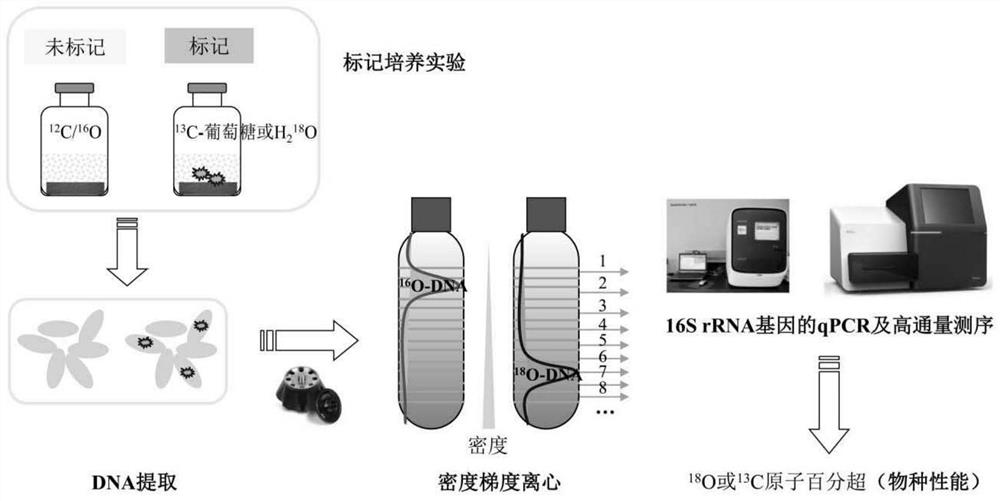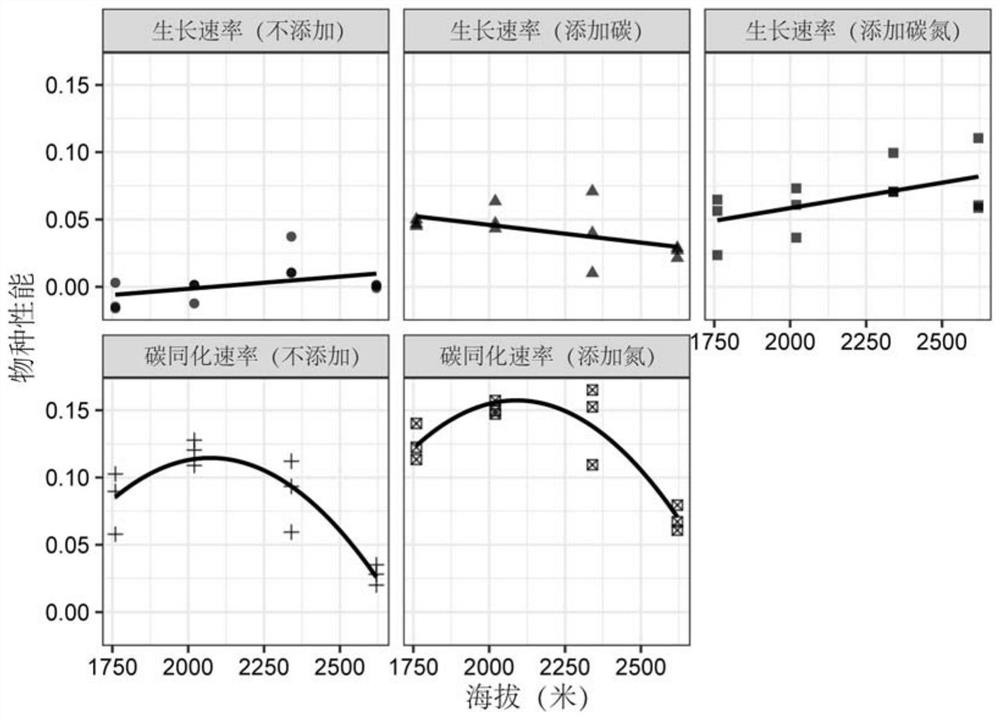Quantitative method of microbial environmental change response force
A technology of environmental change and responsiveness, applied in the field of environmental science and engineering, capable of solving quantitative analysis and other problems
- Summary
- Abstract
- Description
- Claims
- Application Information
AI Technical Summary
Problems solved by technology
Method used
Image
Examples
Embodiment 1
[0072] Taking the soil samples of four altitude gradients (1750m, 2000m, 2250m and 2500m) as an example, a total of 12 samples (including 3 repetitions) were collected from low to high altitudes for subsequent labeling experiments, and the specific implementation steps of the labeling experiments for each sample for:
[0073] Step 1, by adding labeled substrate ( 13 C-glucose and 18 O-H 2 O) and conventional substrates ( 12 C-glucose, H 2 16 O, NH 4 NO 3 ) to carry out the soil labeling experiment, eight treatment groups are set altogether, specifically: H 2 18 O marker group (18O;b), 13 C-glucose+H 2 16 O marker group (13C; g), 12 C-glucose+H 2 18 O flag group (12C_18O; d), 13 C-glucose+H 2 16 O+NH 4 NO 3 marker set (13C_N; h), 12 C-glucose+H 2 18 O+NH 4 NO 3 flagset(12C_18O_N; f); H 2 16 O control group (16O; a), 12 C-glucose+H 2 16 O control group (12C; c), 12 C-glucose+H 2 16 O+NH 4 NO 3 Control group (12C_N; e), see figure 1 ;
[0074] ...
PUM
 Login to View More
Login to View More Abstract
Description
Claims
Application Information
 Login to View More
Login to View More - R&D
- Intellectual Property
- Life Sciences
- Materials
- Tech Scout
- Unparalleled Data Quality
- Higher Quality Content
- 60% Fewer Hallucinations
Browse by: Latest US Patents, China's latest patents, Technical Efficacy Thesaurus, Application Domain, Technology Topic, Popular Technical Reports.
© 2025 PatSnap. All rights reserved.Legal|Privacy policy|Modern Slavery Act Transparency Statement|Sitemap|About US| Contact US: help@patsnap.com



